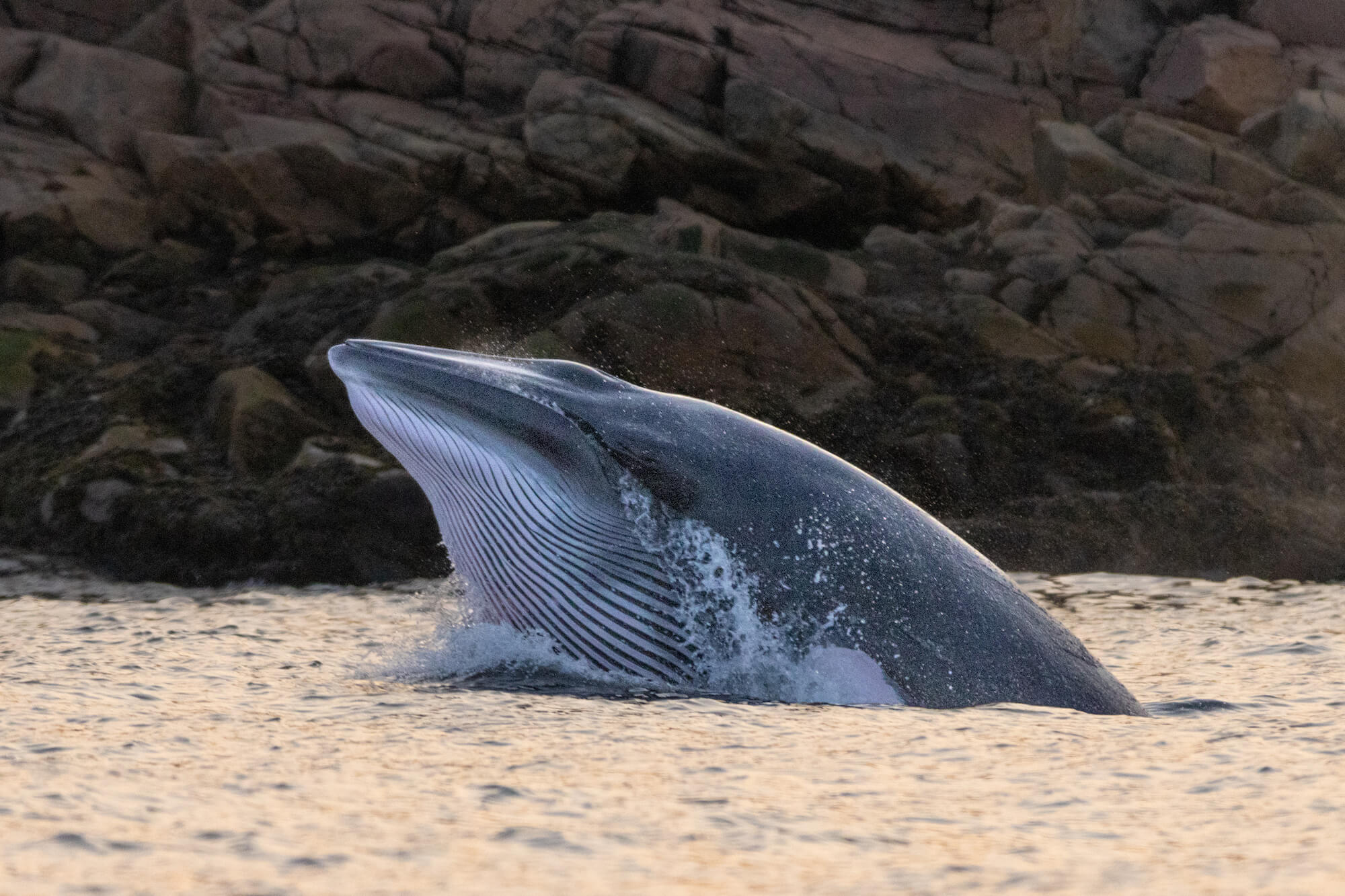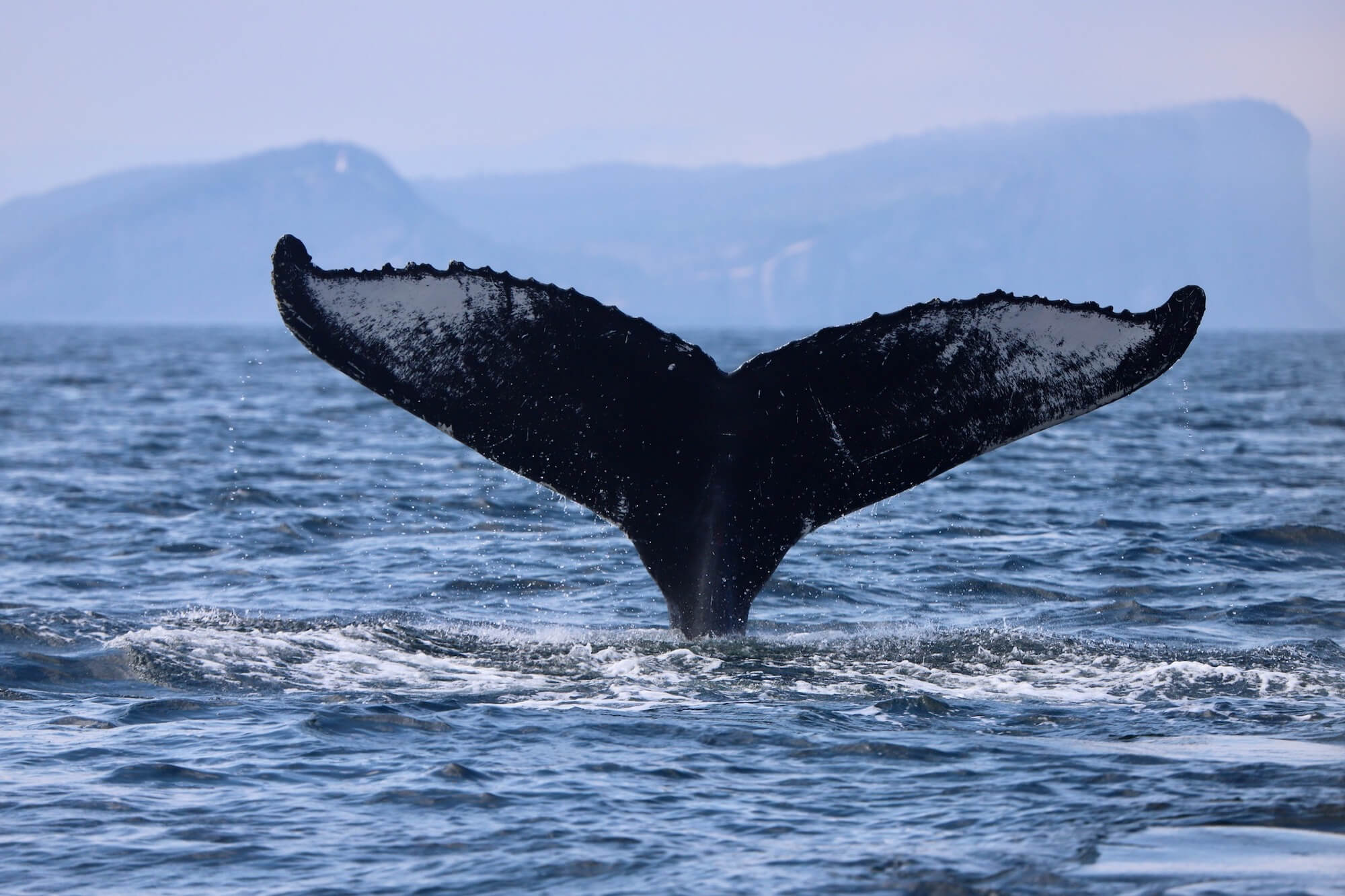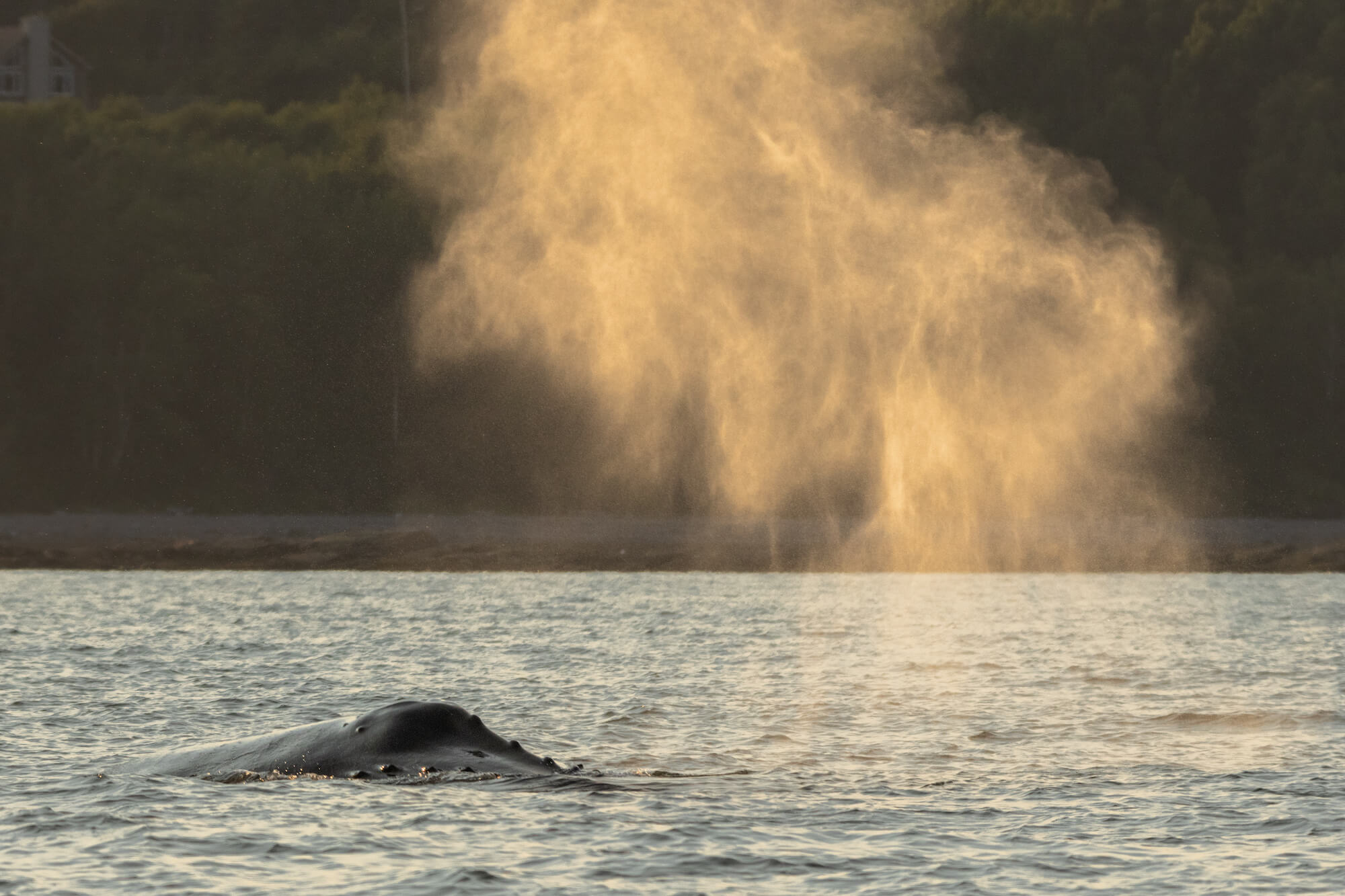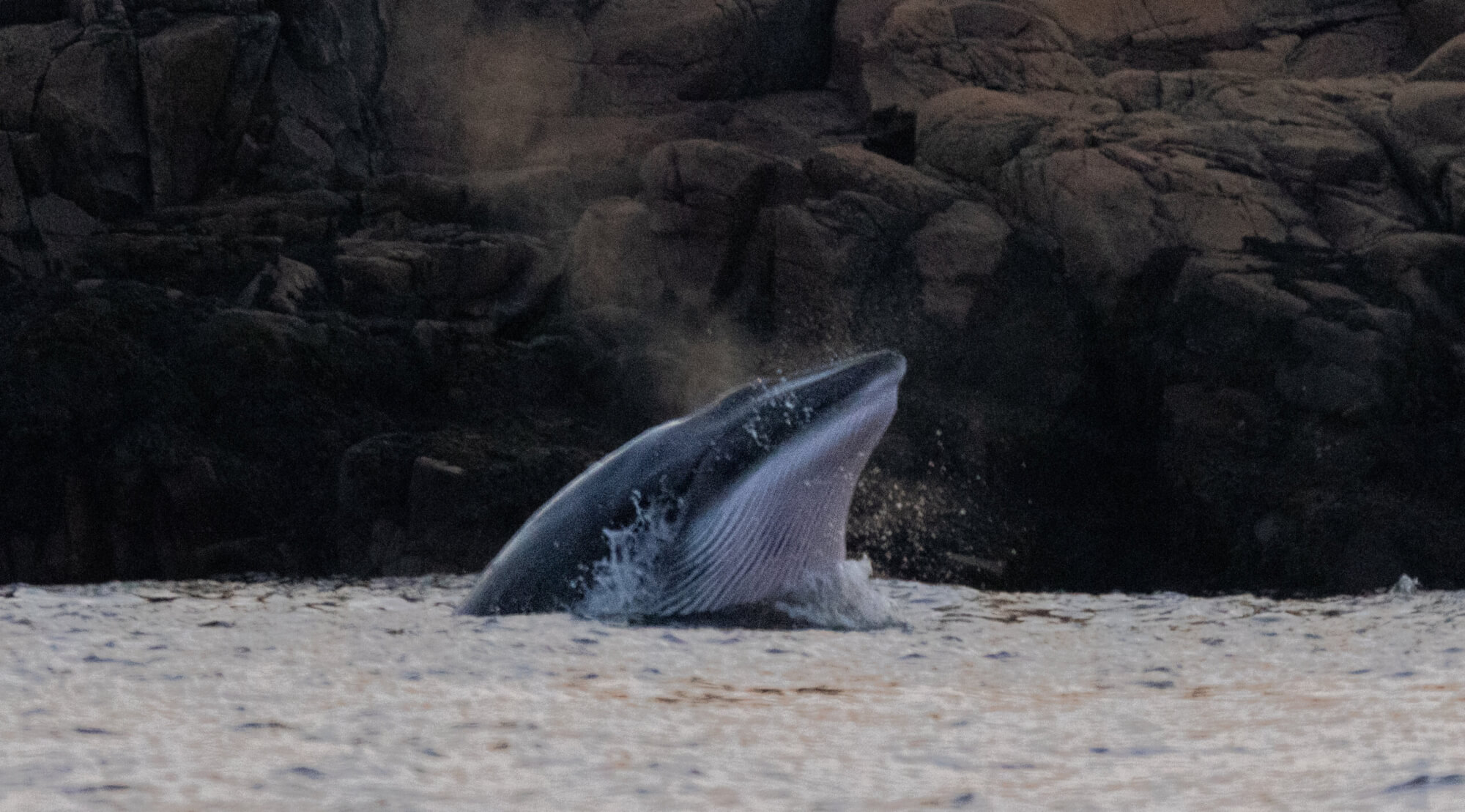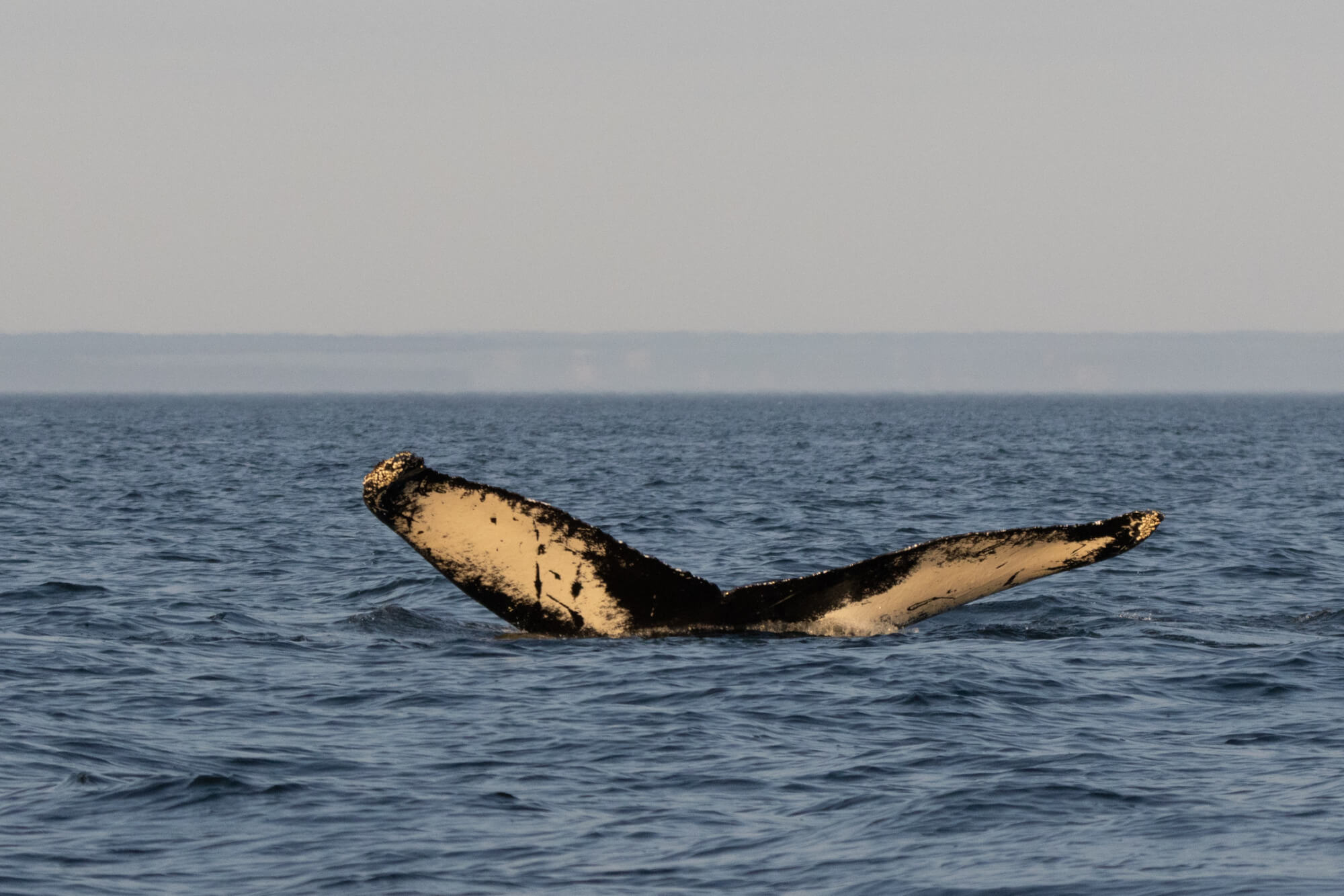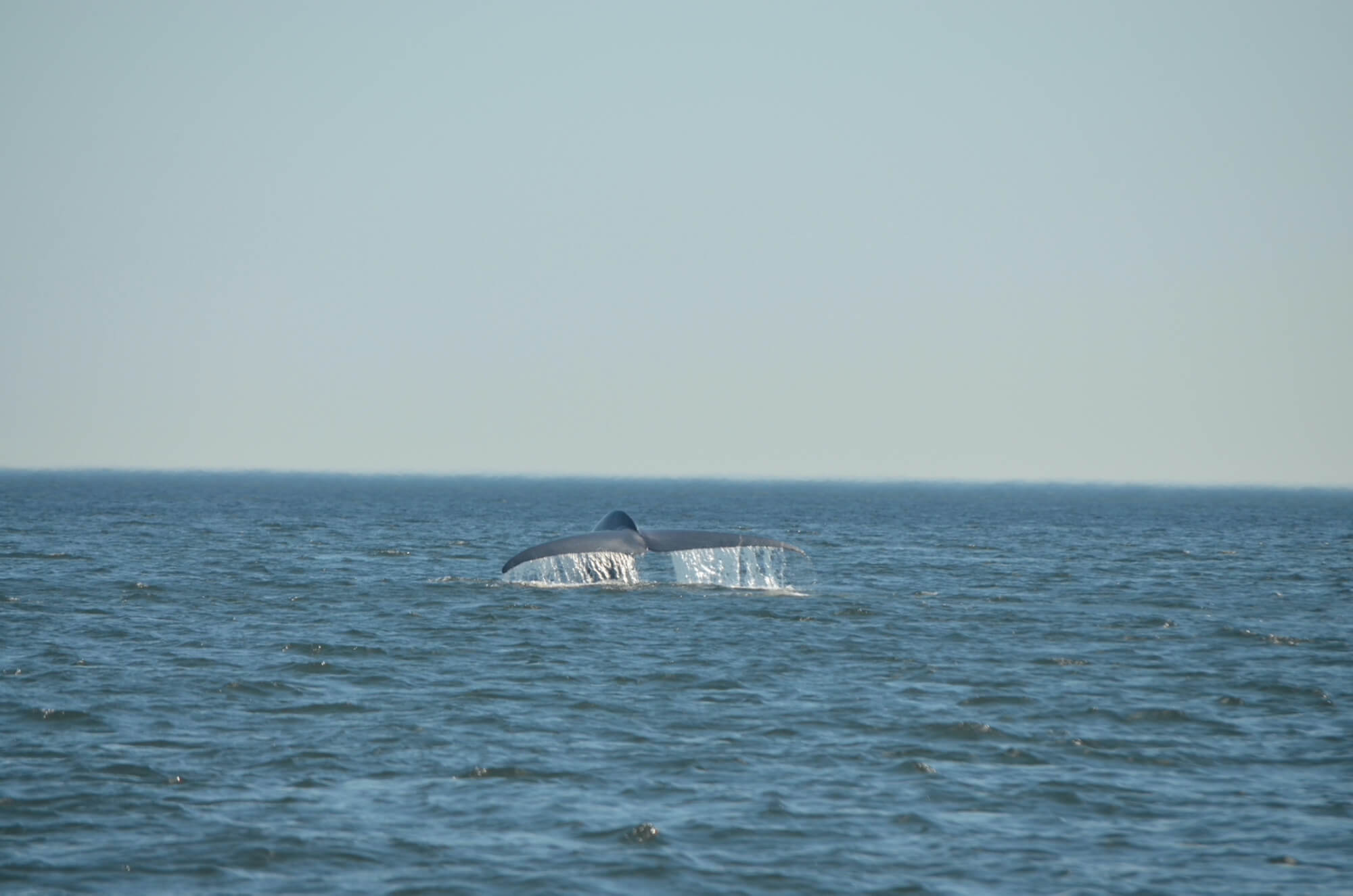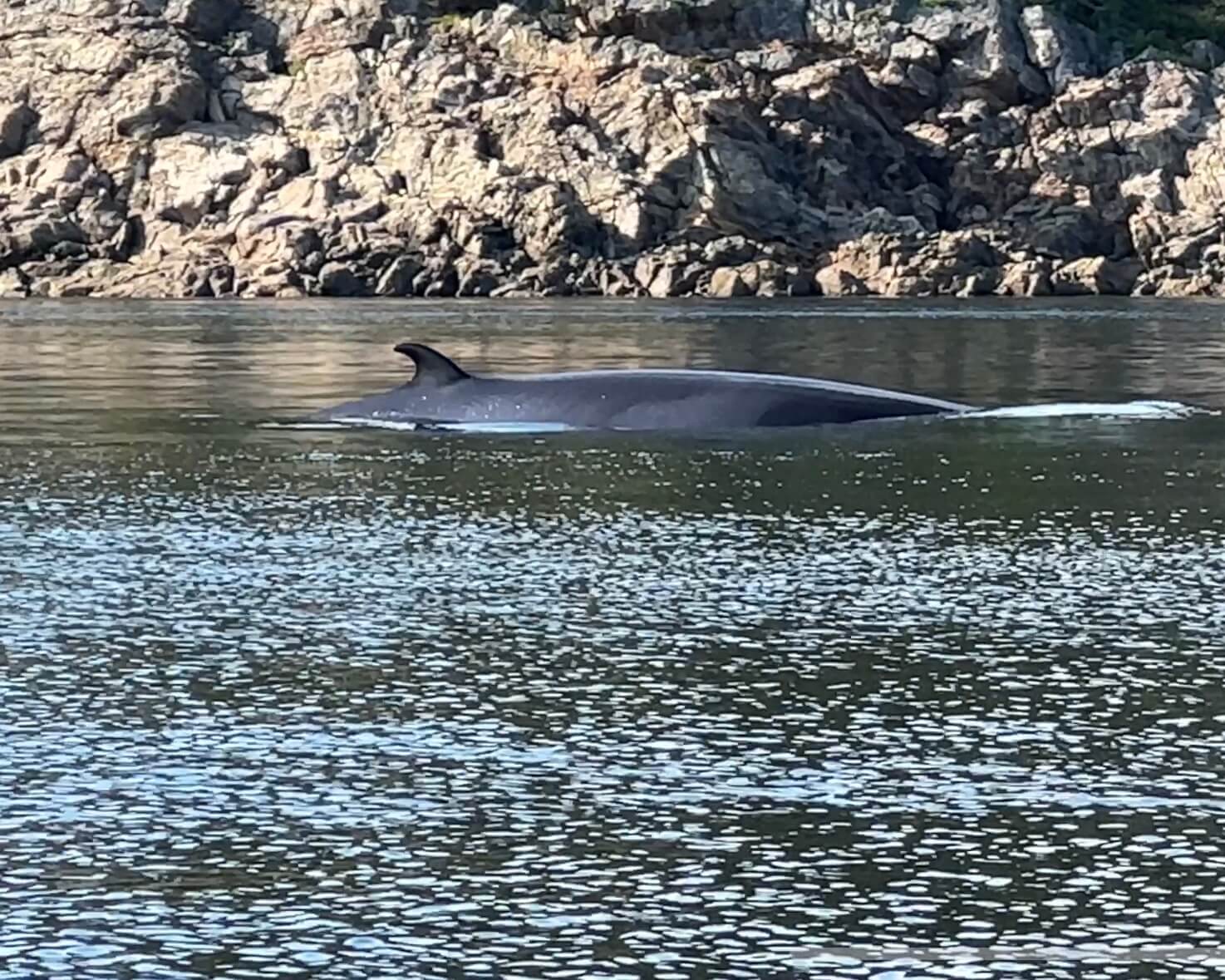There is something romantic and relaxing about the seaside, which is perhaps why vacationers make a mad dash to the coasts to spend their summer holidays! When you stand on the shore, you never know what you might see as you gaze toward the sea: a spout of a large rorqual that appears when you least expect it, the splash of a breaching minke whale, a porpoise’s dorsal fin reflecting the colours of the setting sun, or perhaps you will simply enjoy a peaceful moment in nature to contemplate the waves.
Whether you’re at one of the observation sites dotting the “Whale Trail” in Quebec’s Côte-Nord region, exploring the Saguenay Fjord or travelling through the Bas-Saint-Laurent or Gaspésie regions, marine mammals should be a big part of your itinerary!
Gaspé Peninsula
During outings on the water on July 18 and 19 between Rivière-aux-Renard at the tip of the peninsula and L’Anse-à-Beaufils, an amateur cetologist recorded the presence of the humpback whale Splinter. In Gaspé Bay, a fin whale and a blue whale were observed in the last few days, while minke whales and porpoises are still being sighted frequently. “Grey seals are increasingly numerous,” explains one naturalist, “up to almost 200 at Cap Gaspé, and the pups are visibly growing by the day.”
A resident of La Marte spots belugas for the first time ever from his home, even though he has lived there for 20 years. The highly distinct white backs of these cetaceans were seen offshore. He also had the chance to observe a large whale. It just goes to show that you never know what you might see!
Surprise in La Malbaie
On July 20 in Cap-à-l’Aigle, grey seals are having a field day in the pouring rain. Near the municipal wharf, four or five individuals take turns popping out their heads and diving, undisturbed by the weather that has scared off most of the human visitors. On Monday, July 22, a few minke whales are swimming offshore, not to mention the belugas that have been present daily.
Late in the afternoon, a regular was in the middle of a conversation when he heard a breathing-like noise near the docks of the marina. Thinking it was just his mind playing tricks on him, he kept talking until he heard a second breath behind him. It really was a whale! He finally observed the typical tail fin of a humpback just a few dozen metres from shore. The third time was a charm!
Evening at the river’s edge
At Cap de Bon-Désir, a naturalist enjoys a memorable evening. As the day winds down, a calm sets in and the river becomes smooth as glass, perfect for observing all the marine mammals that would show up: “A seal here and there, and at around 7:30, we began to see porpoises, two or three at first, then more and more and throughout the evening to the point that no matter which way we looked, there they were!” Nearly a hundred must have passed before our eyes, following the falling tide toward Les Escoumins. We could hear their quiet breathing, and I’m almost certain that I heard the famous pig-like noises they are known for. It was like a loud snore. ” Indeed, their breathing can only be heard if the weather is calm. In fact, the etymology of the French word for porpoise, “marsouin,” translates as “sea hog”!
Harbour porpoises are gregarious, living in small groups of 2 to 5 individuals that can gather in pods of a few dozen or even a few hundred individuals, as seems to be the case for this observation. These groupings are most certainly linked to feeding.
However, this extraordinary evening was still not over, as another rare behaviour in this species was observed: “We also saw two different porpoises breach. That’s a first for me! One of them even jumped more than three times. It was really awesome.” Besides porpoises, two minke whales were feeding, a few harbour seals were swimming, belugas were following the tide and the blows of large rorquals could be heard in the distance.
In addition to this diversity already present in the Saguenay-St. Lawrence Marine Park sector, three fin whales, the blue whale Phoenix, and several humpbacks, including Siam, Gaspard and H857 were reported. Also back in the area is H944, a.k.a. Katana. Grey seals and a few harp seals were also noted.
Several minke whales were observed using a special feeding technique called lunge feeding. To do this, the whales make a rapid lateral acceleration to create an eddy, then opening their mouths to gulp down a high density of krill or small schools of fish.
Farther down the coast
Still no big blows around Franquelin this week, but minke whales and harbour porpoises are still very present. “Several solitary grey seals are standing guard,” comments one resident. “They take advantage of calm, sunny days to keep their heads out of the water and dry their fur.”
In Pointe-des-Monts, a local resident is surprised to see over 30 belugas, which he admires from afar through his spotting scope. “We’re not used to seeing them in the summer around here!” Two minke whales and a grey seal have also been roaming the area. In the Mingan Islands, a wildlife photographer captures pictures of an ocean sunfish.
Where are the whales this week? Observation map
These data were reported by our network of observers. They give an idea of the presence of whales and in no way represent the actual distribution of whales in the St. Lawrence. Just for fun!
Click on the whale or seal icons to discover the species, the number of individuals, additional information or photos of the sighting. To enlarge the map, click on the icon in the top right-hand corner. The map works well on Chrome and Firefox, but not so well on Safari.
To display the list of sightings, click on the icon in the top left-hand corner.
Thanks to all our collaborators!
Special thanks go out to all our observers who share their love for marine mammals with us! Your encounters with cetaceans and pinnipeds are always a pleasure to read and discover.
On the water or from shore, it is your eyes that give life to this column.
Célia Baratier
Odélie Brouillette
Marie-Andrée Charleboix
Michel Comeau
Thalia Cohen-Bacry
Laetitia Desbordes
Pierre-Soleil Dion
Maxime Esther Bouchard
Jade-Audrey Lavergne
Yael Medav
Élizabeth Melis
Camille Némond
Diane Ostiguy
Chloé Pazart
Renaud Pintiaux
Pascal Pitre
Jean Roy
René Roy
Guillaume Savard
Christine Stadelmann
Andréanne Sylvain
Valérie Thériault-Deschênes
Marielle Vanasse
Additionally, we would like to acknowledge the following teams that also share their sightings:
Sept-Îles Research and Education Centre (CERSI)
Group for Research and Education on Marine Mammals (GREMM)
Marine Mammal Observation Network (MMON)
Quebec Marine Mammal Emergency Response Network (QMMERN)
Mingan Island Cetacean Study (MICS)
Would you also like to share your observations?
Have you seen any marine mammals in the St. Lawrence? Whether it’s a spout offshore or just a couple of seals, drop us a line and send your photos to [email protected]!


